“Good As Gold”
I first heard of New Zealand’s premier wine growing region, Marlborough, from a California winemaker a number of years ago. He was quite taken with New Zealand and appeared emotionally impacted by the beauty of the region. Admittedly, I was intrigued. I kept hearing about the country’s gorgeousness from wine lovers who had visited or worked there. I soon acquired my first bottle of Marlborough Sauvignon Blanc, and that was it. I was hooked for life. The distinct, vibrant, impossibly fresh, with bright acidity and racy personality, these wines have become steady companions in my drinking repertoire. In fact, New Zealand Sauvignon Blancs (or “Savvies” as New Zealanders affectionately refer to them), have prominently dominated my personal consumption for many years. Finally it was my turn to gush. I was on my way to New Zealand, after years of dreaming about it, bound for Marlborough, my beloved Sauvignon Blanc country.
The Marlborough region is located on the South Island, in the “golden triangle.” Diurnal temperature shifts (warm days, cool nights) along with geological features and weather patterns provide an ideal environment for grape growing. The region is responsible for over 70% of New Zealand’s wine production, most of which is Sauvignon Blanc. Interestingly, if you speak to a Napa wine person and they mention “Sauvignon,” you can be sure they are speaking of Cabernet Sauvignon. If you are speaking to a New Zealander, and the term “Sauvignon” comes up, it is most certainly a reference to Sauvignon Blanc, is the reigning varietal here.
There is a notable shift from traditional, recognizable, grassy and gooseberry Sauvignon Blancs New Zealand is known for worldwide to more delineated, terroir driven, site-specific wines. A number of wines I have tasted exhibited distinct jalapeño, tomato stalk flavor profile that was like nothing else I’ve ever had. It was an exhilaratingly unique, stimulating and profoundly different spectrum of flavor.
A great deal of credit goes to wineries such as Cloudy Bay who took US market by storm and claimed a prominent spot in the wine scene. They succeeded by providing US consumers wines that were quite exciting and well-priced.
A while ago, in the States, the likes of Kendall Jackson, etc. pioneered a certain style of white wines and the rest, as they say, is history. Perhaps in similar fashion, Kim Crawford, Cloudy Bay and similar brands were trailblazers for the smaller brands by way of quick expansion and Sauvignon export market dominance, particularly in the UK and Australia.
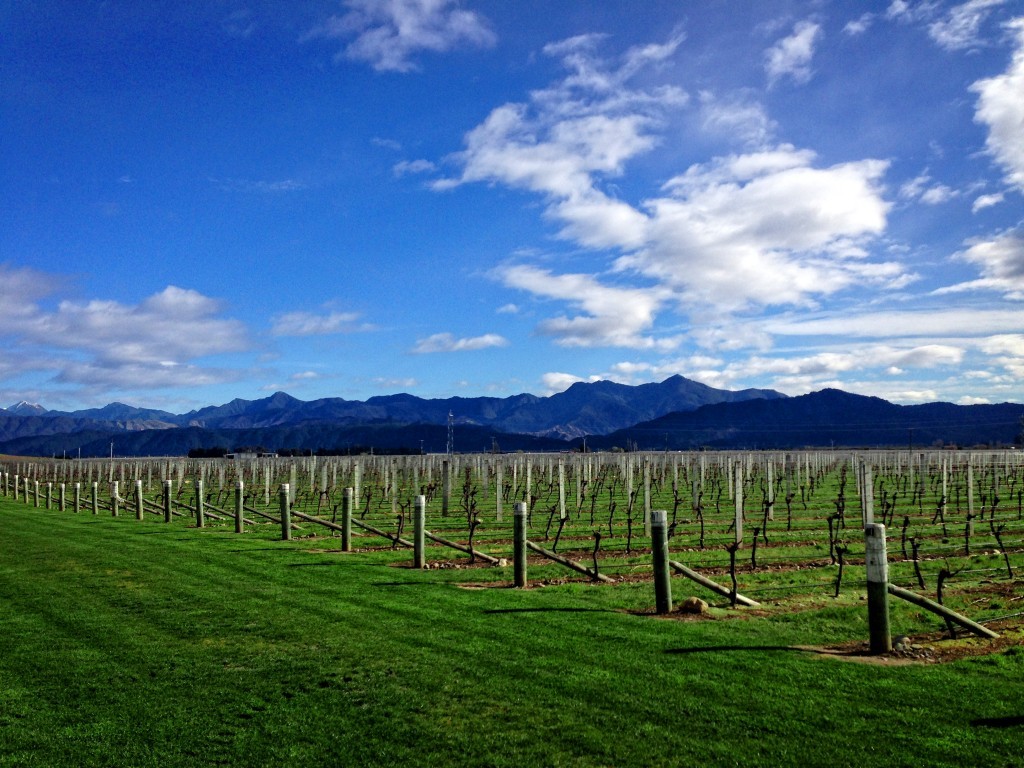
New Zealand’s extraordinarily fresh, vibrant, juicy and tasty Sauvignon Blanc created a precedent that is well…unprecedented. Somehow, when climate and soil came to play on the picturesque South Pacific island, magic happened. A star was born that was destined to pave the way for the New Zealand wine industry. Merely 30 years ago, the first Sauvignon Blanc grapes were planted, courtesy of a Government sponsored program to discourage unsuitable varieties. It worked; and liquid gold was born. Whether subtly transparent in its straw color or boasting brilliant, deep golden glow it is undoubtedly the belle of the ball, with a powerful, meaningful purpose of transforming an agrarian region into a savvy superpower.
As Sauvignon Blanc sales have soared around the world, back home in Marlborough folks are now able to experiment with new varietals. Some tiny brands started with plantings other than Sauvignon. Pinot Gris is gaining brisk momentum. Alsatian varieties are steadily gaining in prominence, with pioneers such as Johanesshof Cellars leading the way. Many wineries produce wonderful sparkling wines in Methode Traditionale. For red wine lovers, the region also produces lovely, well priced, Pinot Noir. Many Marlborough vintners are seeking to produce “Savvies” that differ from the region’s largely value-priced offerings. There is a lot of experimentation going on with new and old oak treatments. Expect to see a new generation of products that offer new and interesting interpretations of this varietal.
New Zealand winery hospitality is terrific. Most larger wineries offer elaborate lunch options at their in-house restaurants. It can get quite busy on the weekends, even in the off-season, with locals popping in for along a three course meal accompanied by a glass or two of wine. This ritual is very different from the US version of wine hospitality. A few California wineries offer light cheese or chocolate pairings, but only a handful feature a restaurant on premises.
Winemakers in the region are a relatively tight knit group. They share a spirit of camaraderie; and are fun loving and very open and transparent in discussing their trials and triumphs.
Unlike California, Oregon or Washington, roughly half of all vineyards are privately owned (as opposed to belonging to the wineries) and most are under contract for fruit.
On my day of arrival, I had a chance to attend a massive blind tasting led by Raymond Chan, a local wine personality. The event was attended by a mix of public, trade insiders and winemakers; all vying for the coveted highest score generated by the highest number of correct guesses. Six wines were offered for the tasting, only two representing New Zealand, a Viognier and a late harvest Gewürztraminer. Our tasting team, humorously titled “Katpiss and The Plungers,” finished with a respectable score, but fell short of winning glory.
During my trip to New Zealand I have learned a number of things about the area’s wines, winemaking styles, production logistics and most importantly, the people behind them. It was arguably the most intriguing trip of my life. New Zealanders are people of formidable work ethic, immense curiosity, filled with a spirit of innovation and friendly collaboration. Intensely practical, savvy and handy, they are also in touch with their creative side. Most of all, New Zealanders are deeply invested in their community. They particularly value quality time spent with their family and friends.
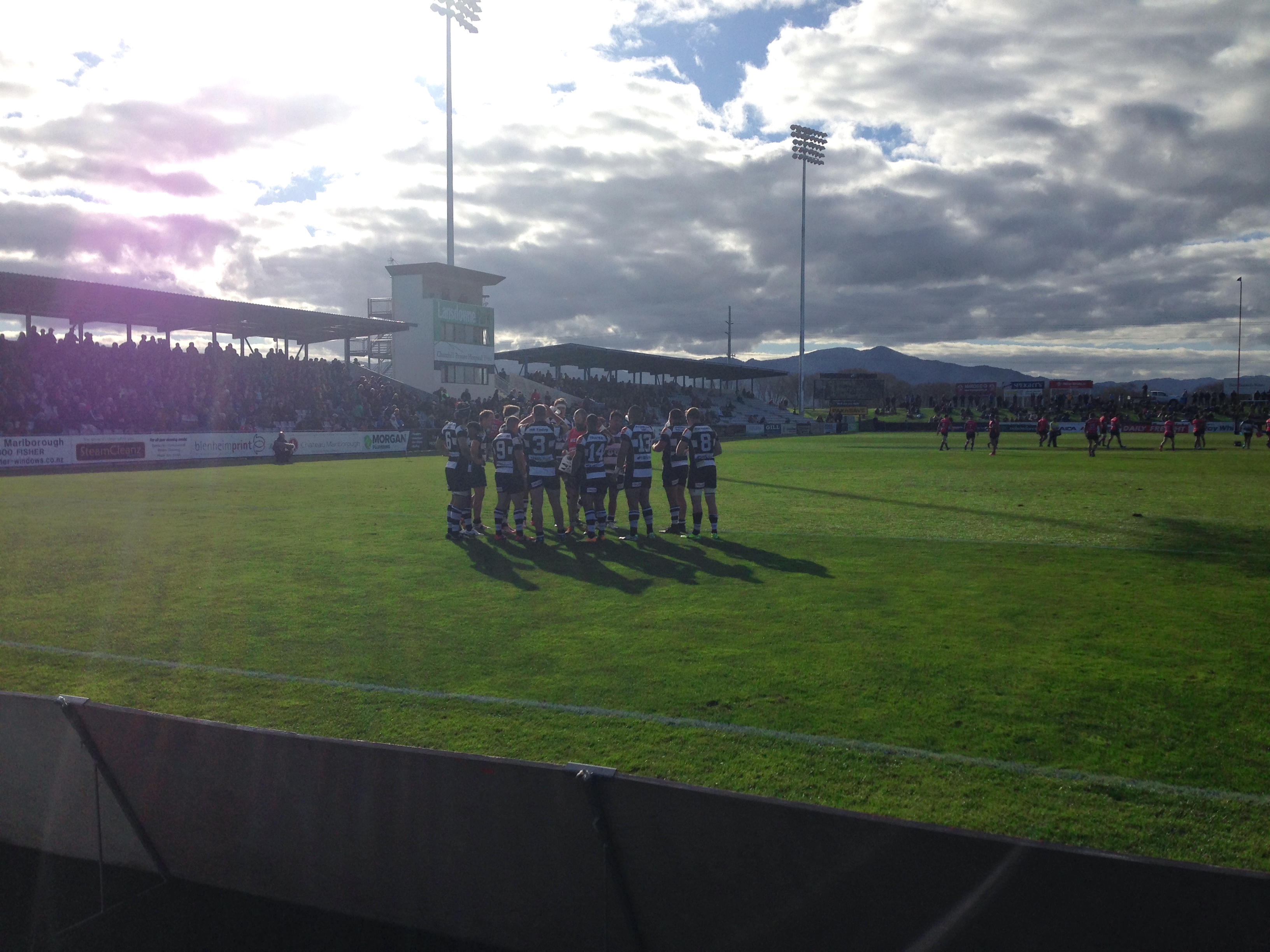
Weekends are dedicated to family barbeques, outings and, yes, New Zealand national past time – rugby. It is no exaggeration to say that nearly everyone in the country watches the sport and is intellectually and emotionally engaged in it. By sheer coincidence, the local rugby team was staying at my hotel over the weekend and somehow, in the process of conversation with the team’s coach, I ended up with a ticket to the Sunday game. When I mentioned it to a couple wine people, the reaction was wildly enthusiastic, with “good on you” cheers overflowing.
When the game day approached and I made my way to the stadium, it was clear that the whole town turned out in support of their local team. All ages, from 6 to 60 were enjoying the game, with some adults showing an occasional burst of displeasure, yelling out “fat fingers!”
Socially, New Zealanders are quite jovial and outgoing. I would estimate the US smart phone usage ratio while socializing is ten-to-one compared with New Zealanders. In New Zealand folks talk, not text. They interact with each other, not their hand held devices. I saw many groups of people relaxing and having lively conversations at a number of venues, from casual bars to upscale restaurants. They were always laughing, teasing one another and having oodles of fun. The friendliness, the natural curiosity, the infectious laughter. Folks appeared very connected, secure and happy. They seem to know by instinct what some of us take years to discover: conviviality with your “mates,” and intense dedication to one’s immediate and extended family make for an uncommon quality of life. Their relaxed attitude and slower paced life makes one pay closer attention to what truly matters.
New Zealanders often use the expression “as good as gold” which means “it’s all good” or “no worries.” Liquid gold found a welcome home there, yet something even more important had taken a powerful hold. And that, in my view, is as good as gold.

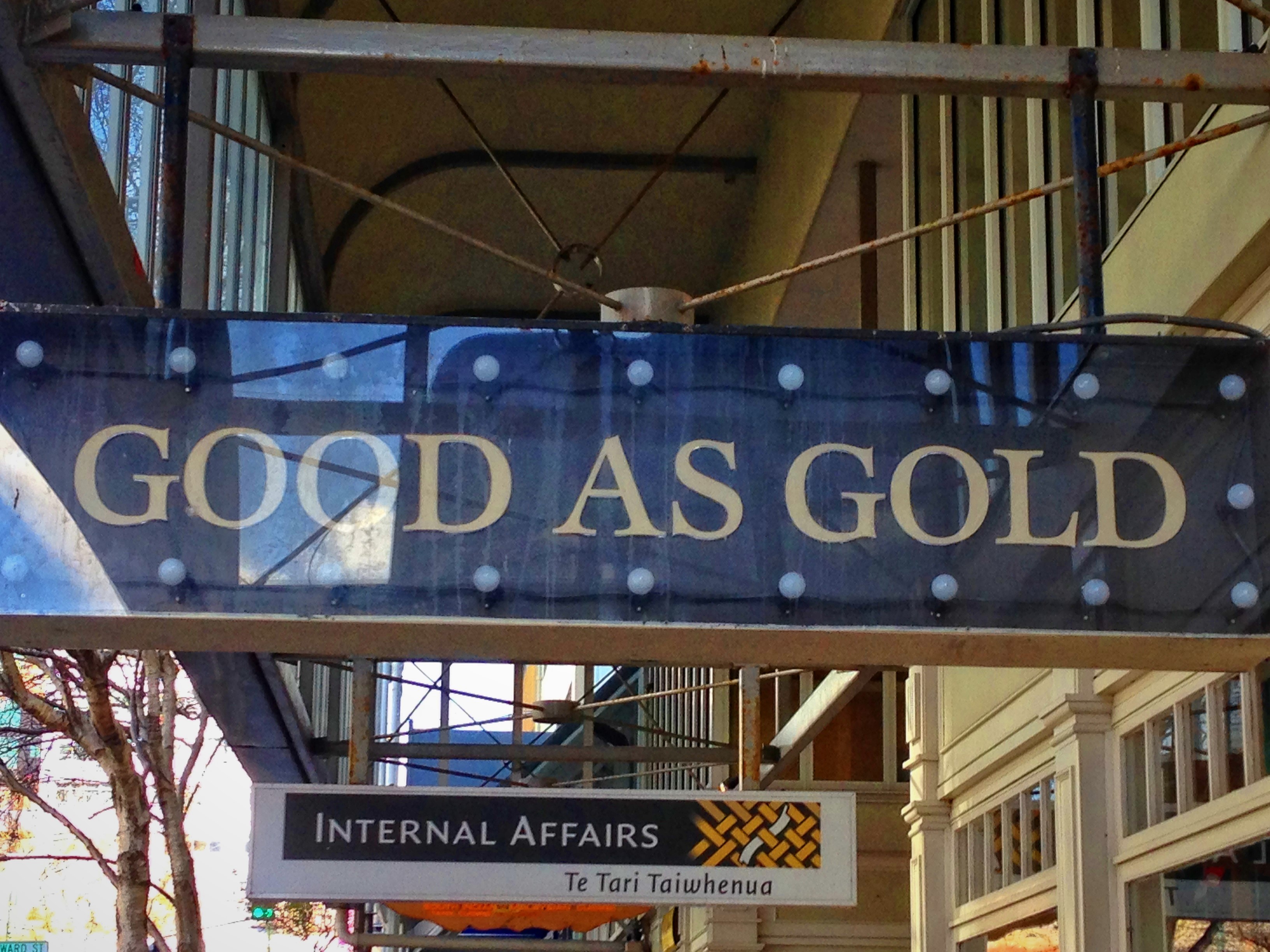
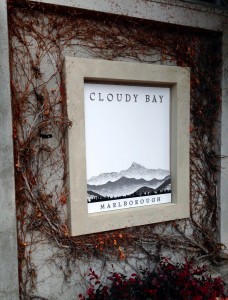

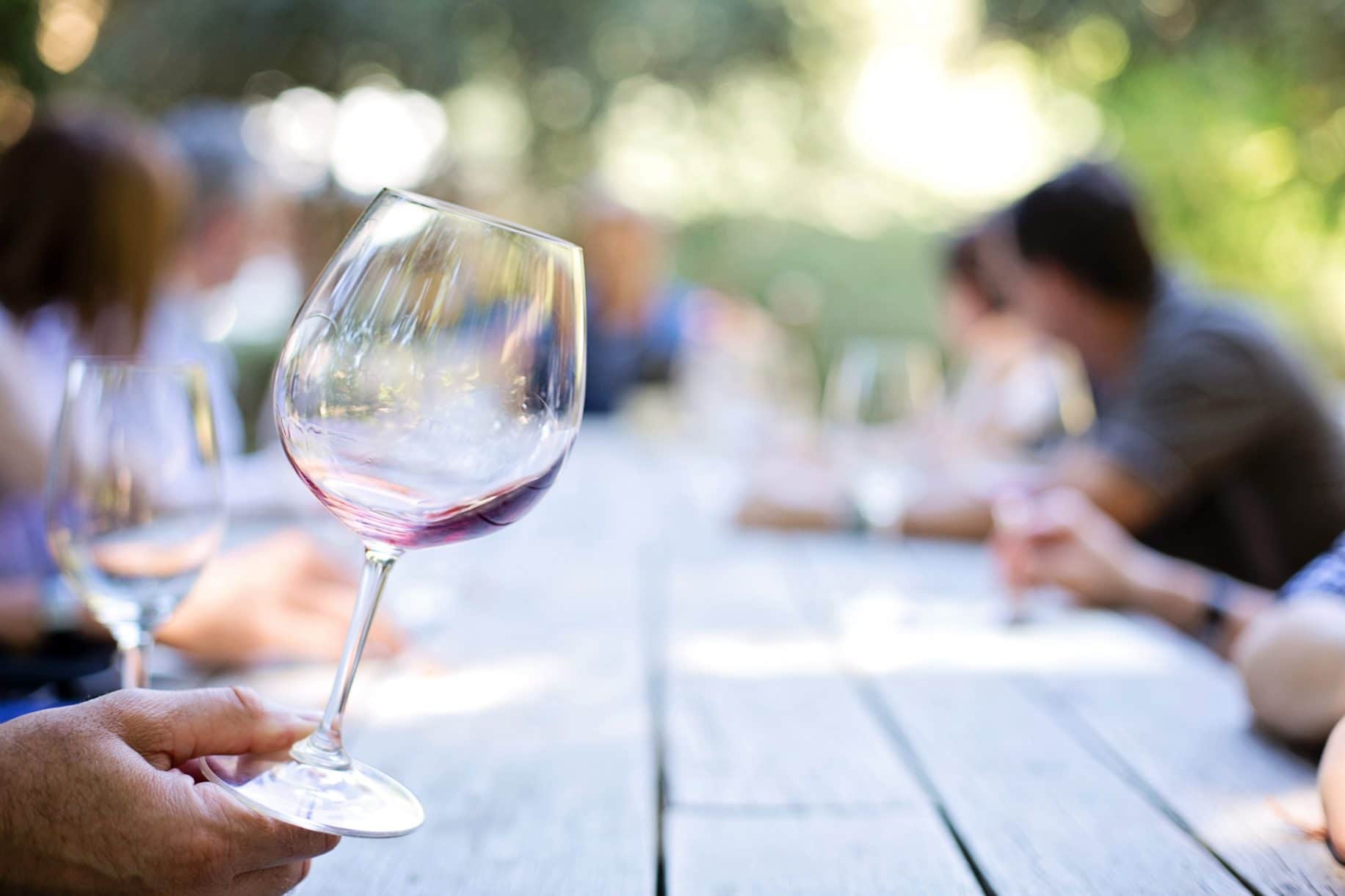

You must be logged in to post a comment.